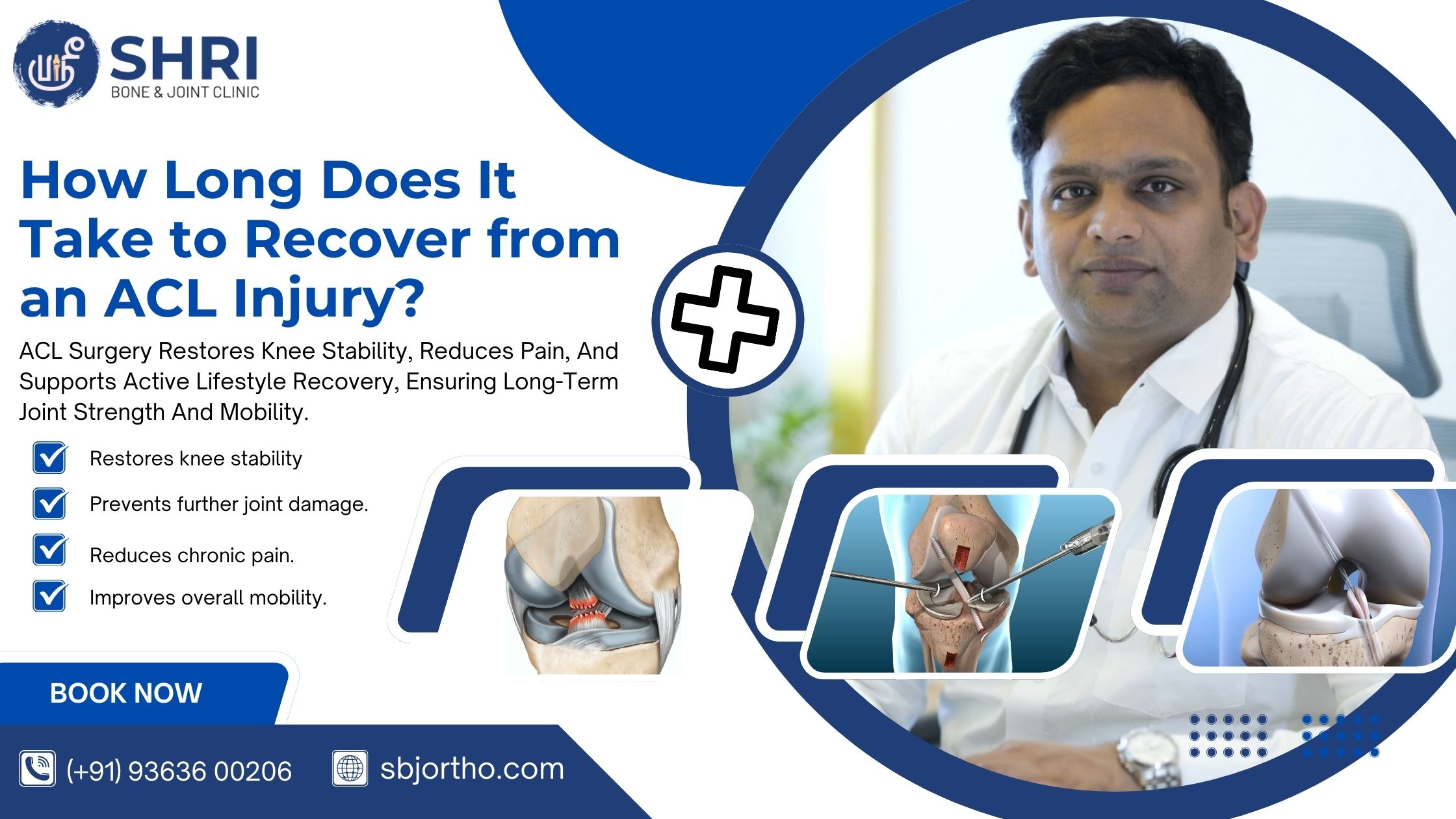An ACL (anterior cruciate ligament) injury is one of the most common and frustrating knee problems, particularly for athletes and active individuals. Recovery time varies significantly depending on the severity of the injury, the type of treatment chosen, and the patient’s dedication to rehabilitation.
This article explains the typical recovery timeline for ACL injuries and what patients can expect at each stage of the healing process.
Factors That Affect ACL Injury Recovery Time
Several factors influence how long recovery will take:
- Severity of the tear – partial vs complete ligament tear.
- Treatment approach – non-surgical care, ACL repair, or reconstruction.
- Patient’s age and activity level – younger, active patients may require longer rehabilitation.
- Commitment to physiotherapy – structured rehabilitation speeds up recovery.
- Presence of other injuries – meniscus or cartilage damage can extend healing time.
Recovery Timeline Without Surgery
Some patients with partial ACL injuries or low activity levels may avoid surgery.
- First 2–6 weeks: Rest, bracing, and physiotherapy help reduce swelling and restore range of motion.
- 6–12 weeks: Strengthening exercises focus on rebuilding muscle support around the knee.
- 3–6 months: Patients may return to light activities, but high-impact sports are usually avoided.
For patients who remain stable without instability, non-surgical management can be sufficient, though risks of future instability remain.
Recovery Timeline After ACL Repair
ACL repair involves reattaching the natural ligament.
- First 2–4 weeks: Pain and swelling reduce, and patients may start walking with crutches.
- 1–3 months: Physiotherapy helps restore knee mobility and strength.
- 4–6 months: Many patients can return to light jogging and non-contact activities.
- 6–9 months: Full recovery for sports and intense physical activity, though re-injury risk is slightly higher than with reconstruction.
For patients considering their options, comparing ACL Repair vs Reconstruction can help determine the best long-term approach.
Recovery Timeline After ACL Reconstruction
ACL reconstruction is the most common surgery for complete ligament tears, replacing the damaged ligament with a graft.
- First 2–6 weeks: Swelling decreases, and patients regain basic mobility with physiotherapy.
- 3–6 months: Progressive strengthening exercises and balance training are introduced.
- 6–9 months: Patients may return to running, jumping, and sport-specific drills.
- 9–12 months: Full return to competitive sports is possible, depending on progress.
Modern surgical methods such as Arthroscopic ACL Reconstruction Surgery allow minimally invasive procedures, leading to quicker healing and fewer complications.
Importance of Rehabilitation in Recovery
Regardless of the chosen treatment, structured rehabilitation is crucial. Physical therapy strengthens muscles around the knee, restores balance, and prevents re-injury. Skipping or rushing through rehab can significantly delay recovery or lead to long-term instability.
Frequently Asked Questions
Can ACL injuries heal without surgery?
Partial ACL injuries may heal with physiotherapy, but complete tears often require surgical repair or reconstruction for full stability.
How long does it take to walk normally after ACL surgery?
Most patients walk with support within 2–3 weeks, but full mobility takes several months.
Is arthroscopic surgery better for ACL recovery?
Yes, procedures like Arthroscopic ACL Repair and reconstruction offer smaller incisions, less pain, and faster healing compared to traditional open surgery.
When can athletes return to competitive sports?
Athletes usually require 9–12 months of rehabilitation before safely returning to high-level sports.
Which is faster – repair or reconstruction recovery?
Repair may offer slightly faster recovery in the short term, but reconstruction provides stronger long-term stability.

